Knitted things are always relevant components of any autumn, winter and even summer wardrobe. Such clothing items are invariably included in the collections of the most famous world designers and Kuterier. Thus remaining fashionable and stylish almost every year or season.
Content
Among the wide variety of knitted clothing and accessories is a special place is occupied by stoles, which are easily combined with different styles in clothes. Palantine is a beautiful and multifunctional scarf that you can wear with everyday clothes, as well as use as a bright accessory at any holiday or party. He will undoubtedly attract the attention of others, there is more if you tied it yourself.
In this article, we will consider the basic rules for preparing for knitting stoles with knitting needles, the basis for choosing the right pattern for him. We will tell you which materials are better to use, and we will also give several diagrams and descriptions of the palact with knitting needles.
Knitted steamed with knitting needles - description, features and advantages of use
Palantine is a female cape that resembles a regular scarf in shape. The exception is only the size - the stole is much wider and longer than the scarf. This accessory came to the wardrobes of world fashionistas from France. In the traditional sense, the meaning of this word Palantin is a cape with the fur edges. Today, a huge number of different types of stoles are known that perfectly complement any image. Palatin connected by knitting needles gained particular popularity. This accessory complements the image and style of a modern and bright woman, creating a unique emphasis in clothes.
Features of the use of knitted stoles
- First of all, it is a universal accessory that is suitable for any style in clothes.
- Knitted stole is just an indispensable thing for cold and frosty weather. Large volumetric knitting of a pantine will help you warm up, while retaining a stylish and elegant image.
- To tie the steam room with knitting needles is not a complicated process. The main thing is to decide on the model, patterns and yarn.
- Palantine can be used as a collar or a huge shawl, it all depends on the image you need.
- When knitting a palact from natural yarn, you will keep a neat and well -groomed type of product for a long time.
- Any knitted steamer can be supplemented with jewelry and this will give your image even greater elegance. You can use for example beautiful and original brooches.
- Today, it is especially important to use aged things in their image, as if they had just taken them out of a grandmother's chest. Palantine, connected in this style, will undoubtedly become the central elements in your image.
- You can tie several options for a stoop to use for various wardrobe options.
- With the help of a pantry thrown on the shoulders, you can hide the "problem" places of your figure.
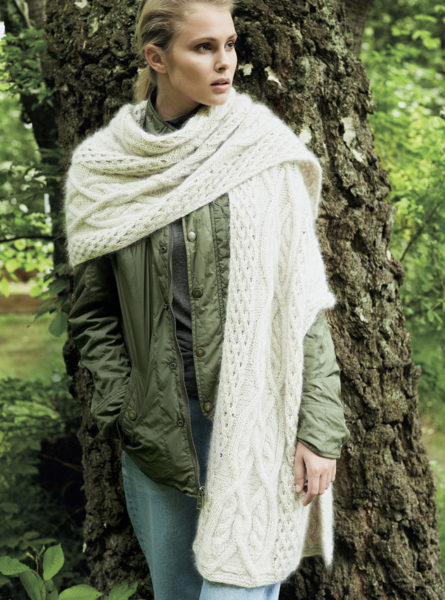
With what to wear knitted stole
- Knitted stole in restrained colors is perfect for an office style in combination with a business skirt or trousers and a blouse.
- As an option, you can cover your head with a palactin. Beautifully throwing a palant on your hairstyle, you will create a romantic and elegant image.
- In winter, steamers can be worn over a coat or jacket. There are a huge number of methods for tying a palantine. By choosing one from which one, you can create a decorative element from this accessory, as well as warm up during severe frosts.
- Openwork light steamer can be safely used in combination with an evening or cocktail dress. In this case, a translucent, monophonic stole associated with very thin threads is suitable. Correctly selected to your dress, stole will give your image of lightness and femininity.
- Palantine transformer can be used as the most different clothing item. Such palactins are used as shawl on the head, like vests or as a cape.
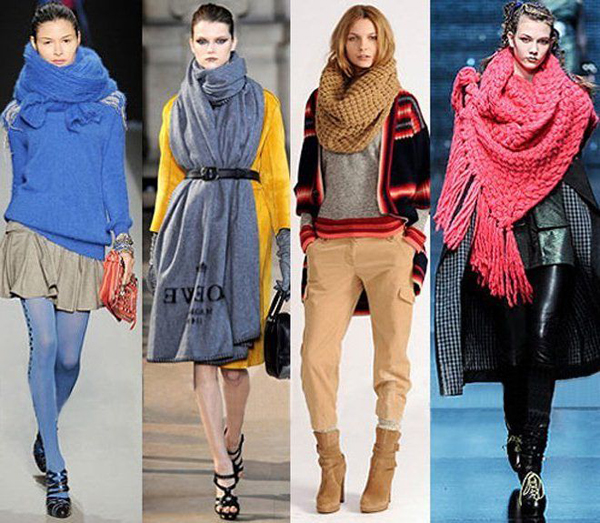
Preparatory work before knitting stoles with knitting needles
It is not difficult for a novice needlewoman to tie the steam room with knitting needles. To do this, you need your desire, as well as choose a suitable model and stooping scheme with knitting needles, patterns for it and determine yarn. Palantine has standard dimensions, based on which you yourself can tie a masterpiece. The width is approximately 45-75 cm, and the length is from 140 cm to 200 cm. This volume can be filled with all kinds of patterns, both simple and openwork. Consider all the preparatory stages before the start of knitting a palact with knitting needles in more detail.
Selecting tools for knitting stoles with knitting needles
- We knit the steam room with knitting needles straight and long. The length of the spokes can be very different, so select them depending on the width of the planned steamer. This is necessary so that you can easily distribute all the loops and see the process of your work.
- For knitting, a palantine also suitable for circular knitting needles, which also differ in sufficient length.
- The knitting needles must be selected under a certain thickness of the yarn. If you want to tie light and openwork stole, take thinner knitting needles. However, keep in mind that to obtain an air fabric, knitting needles are best taken a little thicker. For a warm steamer, thick threads are used, so the knitting needles should be thick.
- It is also important to determine the material from which the knitting needles are made. For beginner needlewomen, it is best to use bamboo spokes on which the loops are distributed evenly. For the first steps in knitting, plastic and wooden knitting needles are suitable. Metal knitting needles are heavier and slippery, they are usually preferred to use experienced knitters.
- To get some patterns, auxiliary knitting needles may be needed, which have a curved shape and are designed to remove loops.
Choosing yarn for knitting stoles with knitting needles
- Choosing the right yarn is one of the most important rules for obtaining a beautiful and unusual steamer.
- For summer and light stoles, thin threads and cotton, viscose or mohair are perfect.
- For colder weather, it is best to use woolen yarn, Angora or Moher.
- Mixed yarn, which can consist of different amounts of natural and artificial threads, is also perfect.
- The thickness of the thread can also be completely different. For a light steamer, it is better to take thin threads, for the winter version - thick and voluminous.
- To obtain a beautiful and unique stolate, you can use plain yarn, melange, with sequins and with a metal thread in the composition.
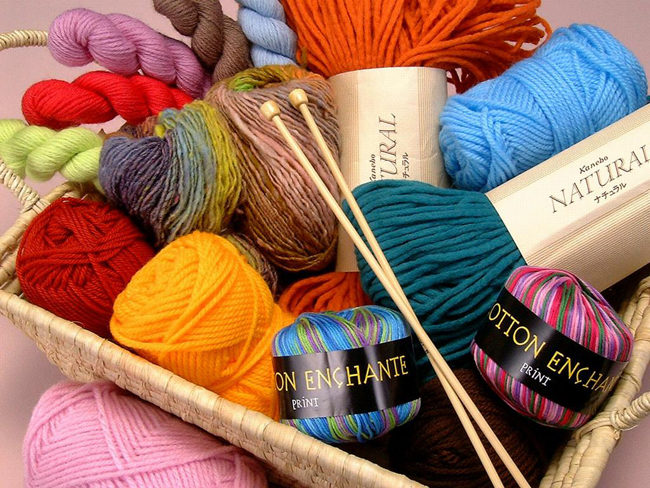
Calculation of the number of stoop loops with knitting needles
It is also important to determine the required number of loops for the future stole. This is affected by the thickness of the selected yarn, spokes, as well as the technique and manner of your knitting. In order to determine the required number of loops, you need to estimate that 1 cm of pantry is placed 2 loops. After that, multiply the estimated palact width by 2. This will be the required number of loops. For palactins with complex openwork patterns, the calculation of the loops will depend on the rapport of the pattern, which is usually given below under the knitting pattern with knitting needles.
Knitting patterns
For knitting stoles, a variety of patterns can be used with knitting needles. For warm and volumetric palactins, you can apply simple patterns from facial and wrong loops using braids. Openger palactins require more complex patterns, for the fastening of which a certain dexterity and attentiveness is necessary. Let us give an example of several patterns for stooped knitting needles.
- The front surface
This pattern is used in most knitting patterns with knitting needles. The front surface is the basis of any pattern. It is very simple: the front loops are knitted by the facial, and the wrong ones - the wrong ones. All other openwork patterns are folded from the front surface, the wrong and complex patterns.
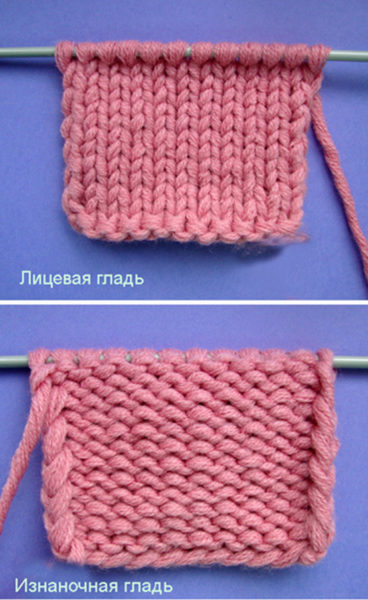
- Simple openwork pattern with knitting needles
Such a pattern is perfect for knitting openwork stole. You can use both thin threads and thicker ones.
Knitting scheme:
- Type 11 loops.
- 1st row: 1 front, 1 cloak, 3 facial, 3 loops together facial, 3 facial, 1 cloak, 1 facial.
- 2nd row: on the pattern.
- 3rd row: 2 front, 1 cloak, 2 facial, 3 loops together facial, 2 facial, 1 cloak, 2 facial.
- 4th row: on the pattern.
- 5th row: 3 facial, 1 cloak, 1 facial, 3 loops together with facial, 1 front, 1 cloak, 3 facial.
- 6th row: knit on the pattern.
- 7th row: 4 front, 1 cloak, 3 loops together with the faces, 1 cloak, 3 facial.
- 8th row: on the pattern.
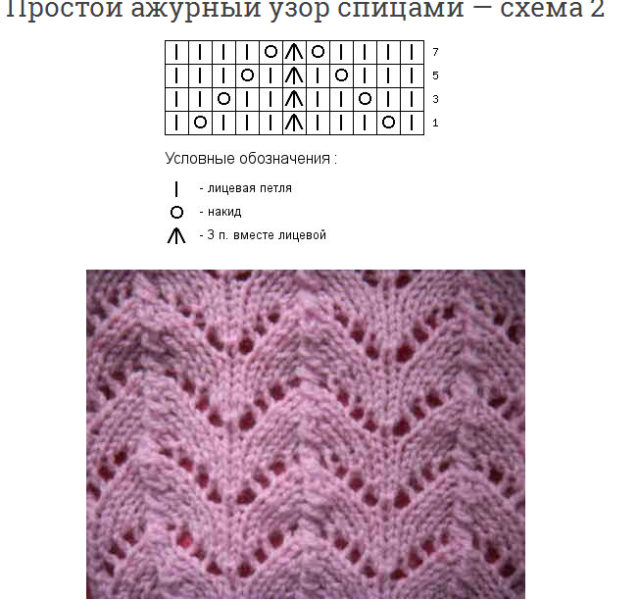
- Summer openwork pattern with knitting needles
This pattern is one -sided and is formed due to crochet, which makes it airy and light. When typing loops, take into account the number of full rapports, the number of loops to rapport and the number of loops after the rapport. This is necessary for a symmetrical pattern.
Pattern of pattern:
- 1st row: 1 front, 2 loops together with the front with an inclination to the right, 1 front, 1 capacious, 1 front, 2 loops together with a front tilt, 2 facial loops, 2 loops together with an inclination to the right, 1 front, 1 cloak, 1 front, 2 loops together with a front with a slope to the left, 5 front.
- 2nd row: knitted according to the drawing, where the crochet must be knitted by the wrong ones.
- 3rd row: 2 loops along with an inclination to the right, 1 front, 1 cloak, 1 front, 1 cloak, 1 front, 2 loops together with a front tilt, 2 loops together with an inclination to the right, 1 front, 1 fraud, 1 Facial, 1 cloak, 1 front, 2 loops together with a front with a slope to the left, 2 loops together the front with an inclination to the right, 1 yarn, 2 facial ones.
- 4th row: on the pattern.
- 5th row: 2 facial, 1 cloak, 3 front, 1 cloak, 1 facial, 2 loops together with a front tilt, 1 front, 1 cloak, 3 facial, 1 fabric, 1 front, 2 loops together with an inclination to the left , 1 cloak, 3 facial.
- 6th row: knit on the pattern.
- 7th row: 4 facial, 2 loops together with a front with a slope to the right, 1 front, 1 cloak, 1 front, 2 loops together the front with a slope to the left, 2 front, 2 loops together with an inclination to the right, 1 front, 1 cloak, 1 front, 2 loops together with a front with a slope to the left, 3 facial.
- 8th row: on the pattern.
- 9th row: 3 front, 2 loops together with the front with an inclination to the right, 1 front, 1 cloak, 1 front, 1 cloak, 1 facial, 2 loops together with the front with a slope to the left, 2 loops together with the front with a tilt, 1 front, 1 cloak, 1 front, 1 cloak, 1 front, 2 loops together with the front with a slope to the left, 2 facial ones.
- 10: On the pattern.
- 11th row: 3 front, 2 loops together with the front with an inclination to the right, 1 front, 1 cloak, 3 facial, 1 cloak, 1 front, 2 loops together with an inclination to the right, 1 front, 1 fraud, 1 front, 1 cloak , 1 front, 2 loops together the front with a slope to the left, 1 front.
- 12th pattern: on the pattern.
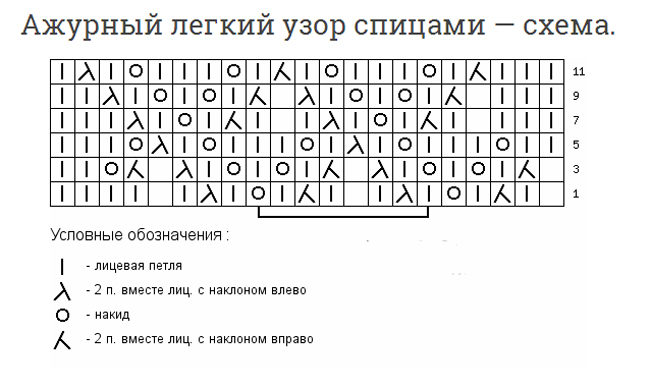

Schemes and description of palantine knitting needles for beginners
Below, we give a description of the knitting schemes for the novelties of the palatins with knitting needles, for the manufacture of which you will need suitable yarn and materials.
Simple and warm stoves with knitting needles
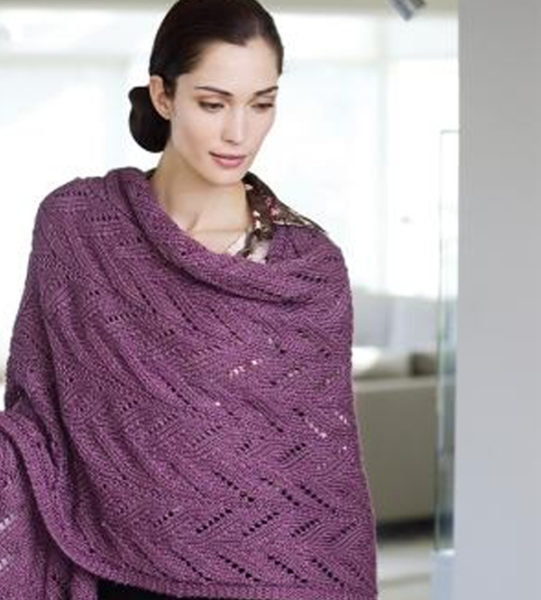
This steam room is within the power of a novice needlewoman. It turns out very beautiful and delicate. Its dimensions: width - 66 cm, length - 183 cm.
Materials: 10 motors of yarn with a mohair and silk content of 50 grams per 100 m, knitting needles No. 5.5.
Knitting loops:
- part - it is necessary to remove the first loop on an additional knitting needle, then knit the second loop of the front, then throw the removed loop on the knitted;
- 2 loops together with the front - enter the knitting needle into the second loop, and then in the first and knit together the front wall.
Knitting description:
- Type 90 loops on the knitting needles.
- Stitch 3 rows of plately viscous.
- Next, add the loops: 2 front, * 1 added loop, 11 facial *, repeat to the end of the row. In total, there should be 98 loops, i.e. All increase 8.
- After you have added the right number of loops, the stole is knitted along the pattern, which is painted 24 loops.
- 1st row: 4 facial, all wrong to the last 4 loops, 4 facial.
- 2nd row and all even: 4 facial, all wrong to the last 4 loops, 4 facial.
- 3rd row: 4 facial, *1 wrong, 3 facial, crochet, 2 facial, broach, 5 front, 2 together facial, 2 front, cloak, 1 wrong side *, repeat up to the last 4 loops, 4 facials.
- 4th row: like the 2nd.
- 5th row: 4 facial, *1 wrong, 4 facial, crochet, 2 facial, broach, 3 facial, 2 loops together facial, 2 facial, cloak, 1 front, 1 wrong side *, repeat up to the last 4 loops, 4 front .
- 6th row: like the 2nd.
- 7th row: 4 facial, *1 wrong side, 5 front, 1 cloak, 2 facial, broach, 1 front, 2 facial loops together, 2 front, 1 cloak, 2 facial, 1 wrong *... 4 front loops.
- 8th row: like the 2nd row.
- 9th row: 4 facial, *1 wrong side, 1 cloak, 2 facial, broach, 5 faces, 2 loops together front, 2 front, 1 cloak, 3 facial, 1 wrong loop *, the last loops 4 facial.
- 10th row: like the 2nd row.
- 11th row: 4 facial, *1 wrong, 1 front, 1 cloak, 2 front, broach, 3 facial, 2 loops together facial, 2 front, 1 cloak, 4 front, 1 wrong side *, the last loops 4 facial.
- 12th row: like the 2nd row.
- 13th row: 4 facial, *1 wrong, 2 facial, 1 cloak, 2 facial, broach, 1 facial, 2 loops together facial, 2 front, 1 cloak, 5 facial *, the last 4 facial.
- Repeat 1-13 rows to a height of 178 cm.
- Next 3 rows of a gastard are viscous.
- Conduct decreases *10 facial, 2 loops together *, so to the end of the row. There must be 90 loops.
- Close the loops of the last row.
Palantine knitting needles from Moher
Moher is a beautiful yarn for knitting a stole. Due to the air knit, large and small holes are obtained on the canvas, which give lightness to the product.
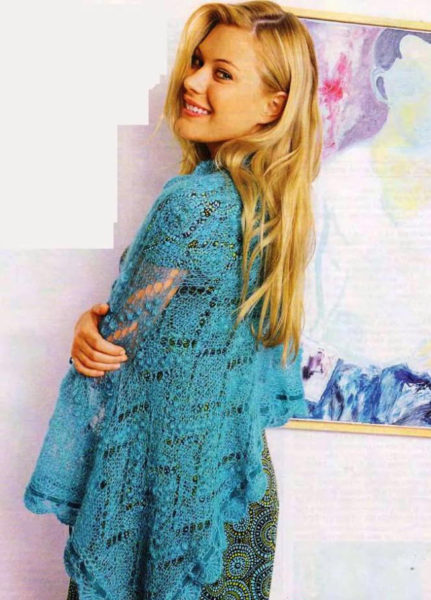
Necessary materials: 125 grams of yarn consisting of 77% mohair, 23% silk - 175 m in 25 grams; Circular knitting needles 5.5, hook.
Pattern knitting:
- The front surface is the 1st row with facial loops, the 2nd row with the wrong loops.
- The main pattern. It is knitted according to the scheme presented below, where certain parts of the pattern are repeated. In total, 178 rows are knitted in the Palantine. In the wrong rows, all loops and crochet are knitted by the wrong ones.
- Binding "shells". After the knitting of the palantine is completed, tie the edges with a crochet with a “shell” pattern. 1st row: STs b/n, in angles at 3 tbsp. b/n. 2nd row: * 1 tbsp. s/n, 1 air loop, 1 loop, let go into the corners of 3 tbsp. s/n. 3rd row: *1 tbsp s/n, skip 3 loops, in the next st/n, knit 8 tbsp. C/2N, skip 3 loops and so on to the end of the row.
Description of knitting pantry from mohair knitting
- Type 65 loops on the knitting needles.
- Stitch 5 rows with the front surface.
- Next, it is necessary to tie 178 rows with the main pattern.
- Further, again 4 rows of the front surface.
- After 187 row, close the loops.
- Tie the palance with a “shell” pattern.
The scheme of the main pattern
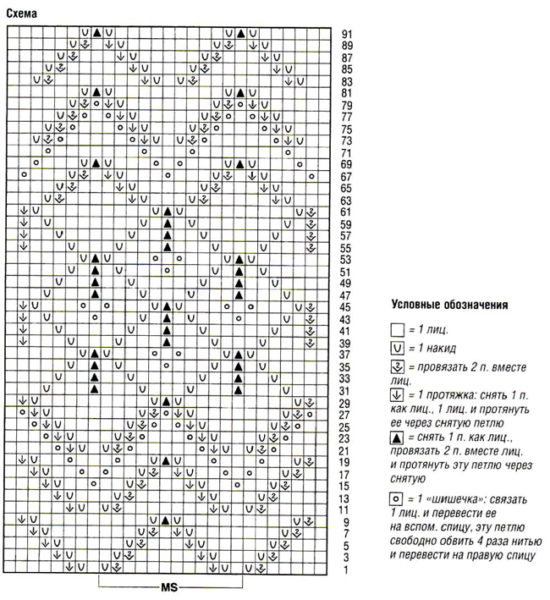
Openwork steamer with knitting needles
Openwork steamers with knitting needles, the schemes of which can be very different, is perfect for an everyday image and for publication. It will not be difficult to bind it to a beginner needlewoman.
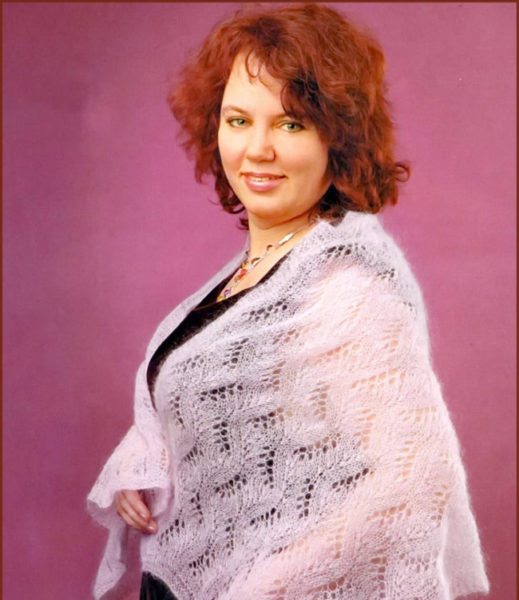
Materials for knitting: 130 grams of yarn consisting of 62% mohair and 38% polyamide 250 m in 50 grams; knitting needles No. 3.
Description of knitting shawl-palance with knitting needles:
- Type 100 loops on the knitting needles.
- Stitch the first 5 rows with the front surface.
- Next, the openwork pattern is knitted. The scheme of which is presented below.
- 1st row: all facial loops.
- 2nd row: on the pattern.
- 3rd row: * front, broach (1 loop to remove the second knit, then stretch out the loop through the knitted loop), 1 front, 2 loops together with the front, 4 facial, 1 fraud, 1 front, 1 crochet, 1 front * and so to the end of the row.
- 4th row: on the pattern.
- The 5th row, the 7th, 9th and 11th are knitted in the same way as the 3rd row.
- The 6th, 8th, 10th and 12th are knitted on the pattern.
- 13th row: all loops are knitted by facial.
- 14th row: on the pattern.
- 15th row: 1 front, 1 cloak, 1 front, 1 cloak, 4 facial, broach, 1 front, 2 loops together facial, 1 front.
- 16th row: on the pattern.
- The 17th, 19th, 21st and 23rd rows are approaching similarly 15.
- All rows from 1 to 23 row are a rapport and knitted to the end of the product.
- After the end of the openwork pattern, knit 5 rows with the front surface.
- Wash, lay out on a flat surface and stretch with needles. Let me dry.
Scheme
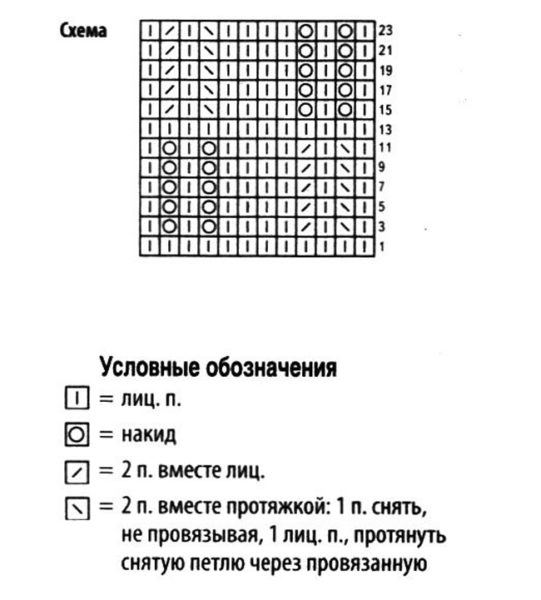
Palantine Fleece with knitting needles
This species of pantry has the shape of a beautiful wave, which is knitted with a specific pattern. Such an accessory associated from wool will warm you on cold winter days and will be an excellent addition to the image.
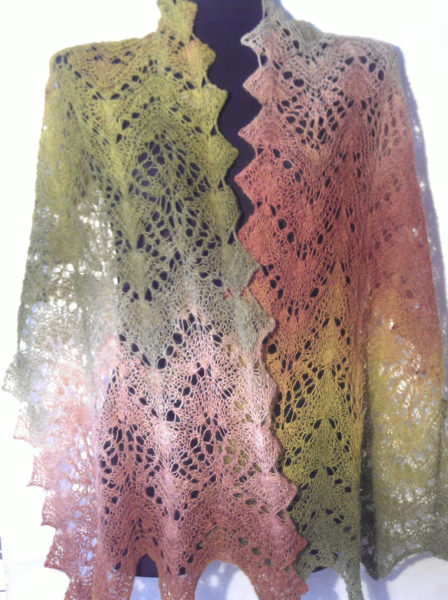
Necessary materials: yarn consisting of 75% wool and 25% nylon 420 m in 100 grams; Straight knitting needles No. 5.
Knitting description:
- Type 95 loops on the knitting needles (the size of the palantine will be 40 cm by 150 cm).
- Stitch 4 rows with the front surface. Try to knit the last row freely.
- Next, we proceed to the knitting of the main openwork pattern.
Knitting scheme
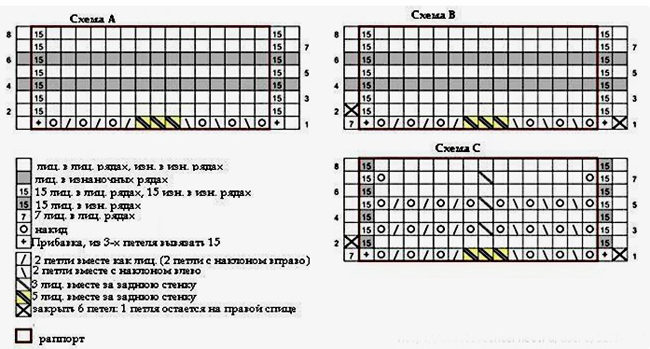
Palantins with knitting needles, photo
Beautiful Blue Strail for Cool Summer evenings
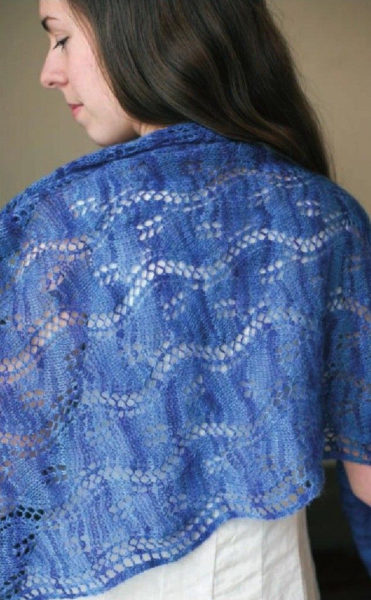
Stylish palact for walking
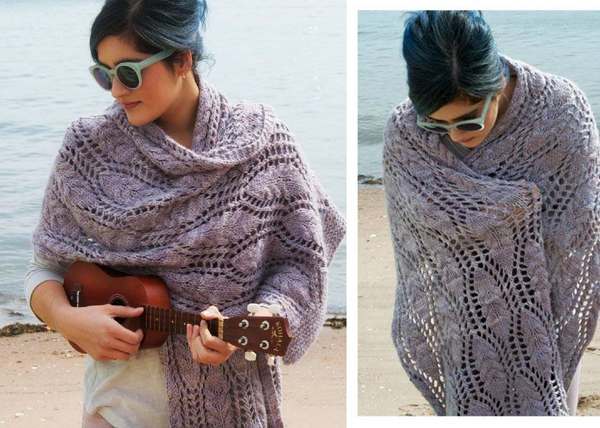
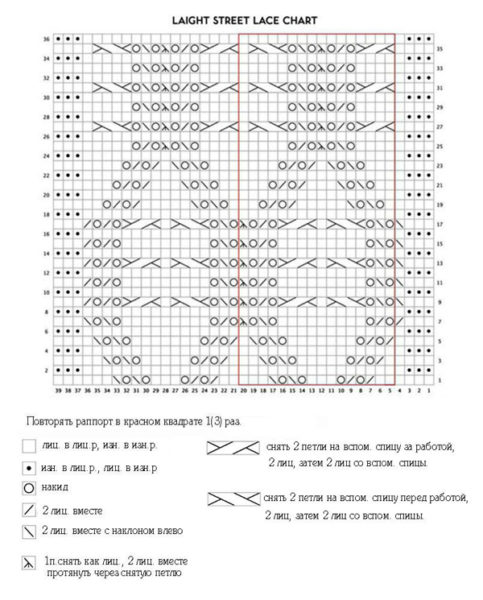
Elegant palant mint color
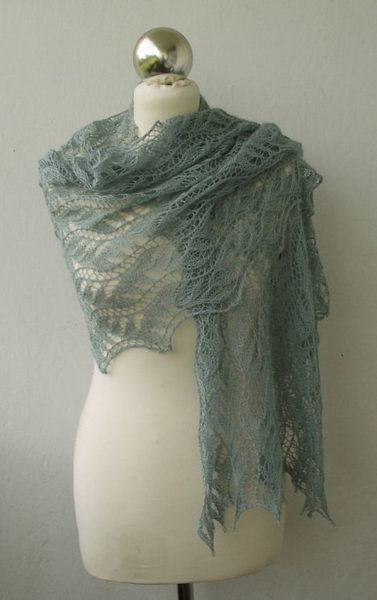
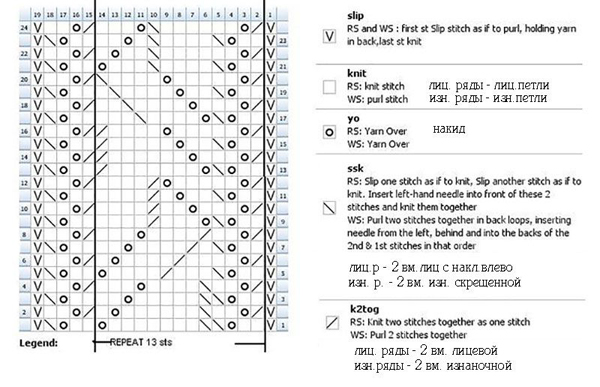
Delicate white stoop for cool weather
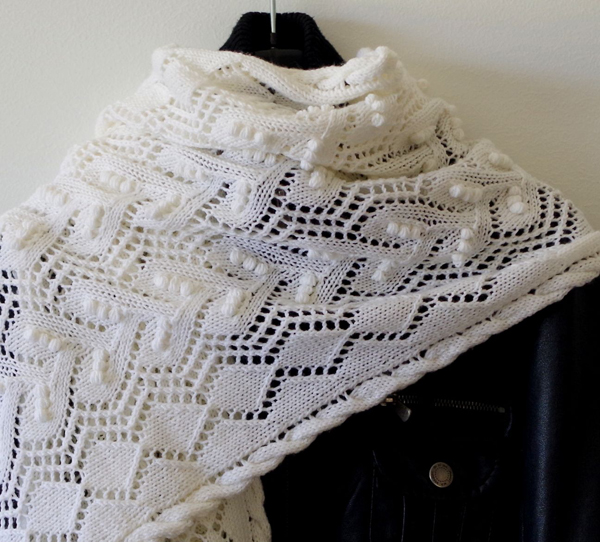
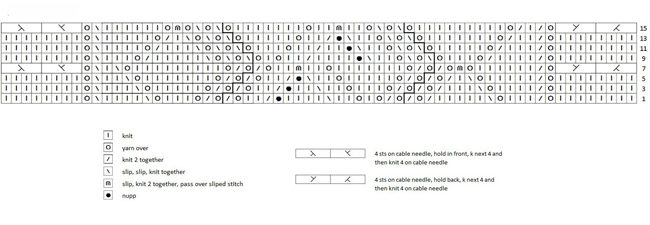
Bright and stylish steamer
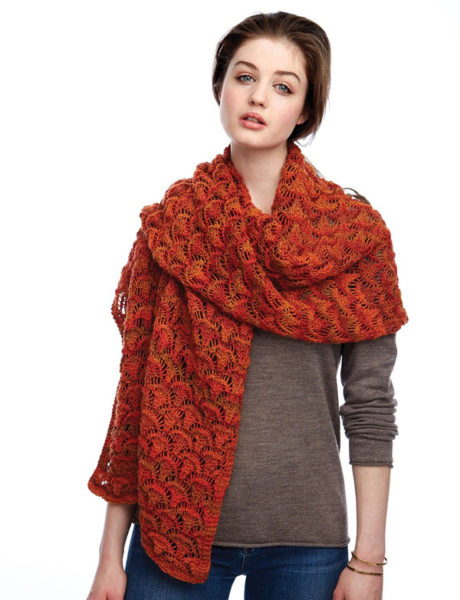
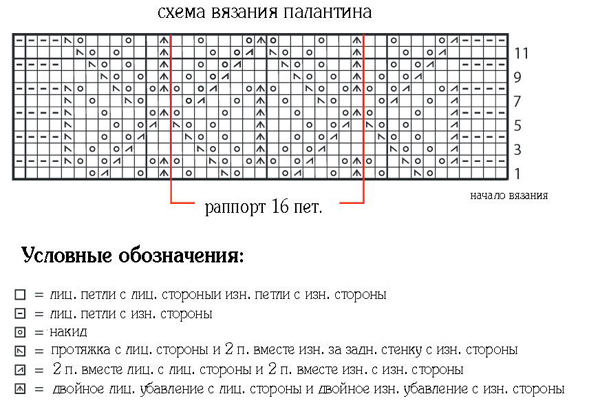
Palantine with knitting needles, video
The video presented below shows master classes on knitting palactins of various kinds.
Knitting red openwork stoles:
Simple openwork steam steering from mohair with knitting needles:
Palantine "Air tenderness":
The ability to knit is a great opportunity to create your own knitted masterpieces that will be a great addition to any wardrobe. Knitted stoles are constant components of fashion trends of any season, so having connected one such accessory, you will always be in trend.









Comments
a couple of years ago, there was no side of metrogils from the same problem, there were no side effects ...
I’m not a fan of peeling at all, it saves from acne of metrogil, it also smoothes it ...
Great article! ...
I take the second course of the Capsules Climafite 911. The tides went very quickly. It became calmer, irritability went away and I sleep well ...
i also noticed - it is worth nervous, everything immediately affects the face. Therefore, I try to avoid conflicts and unpleasant people. Of the creams, I like Miaflow from wrinkles - smoothes not only small wrinkles ...